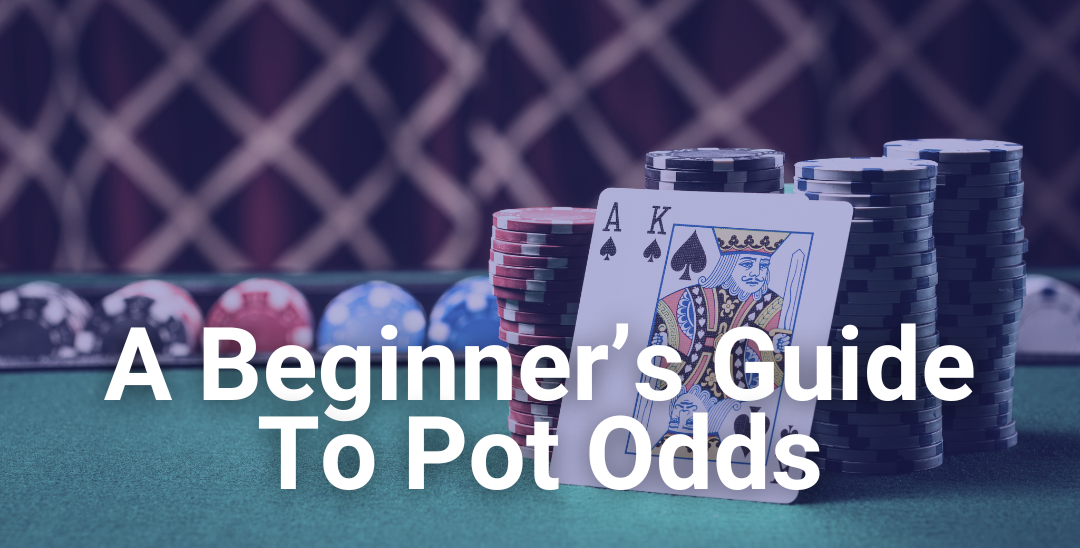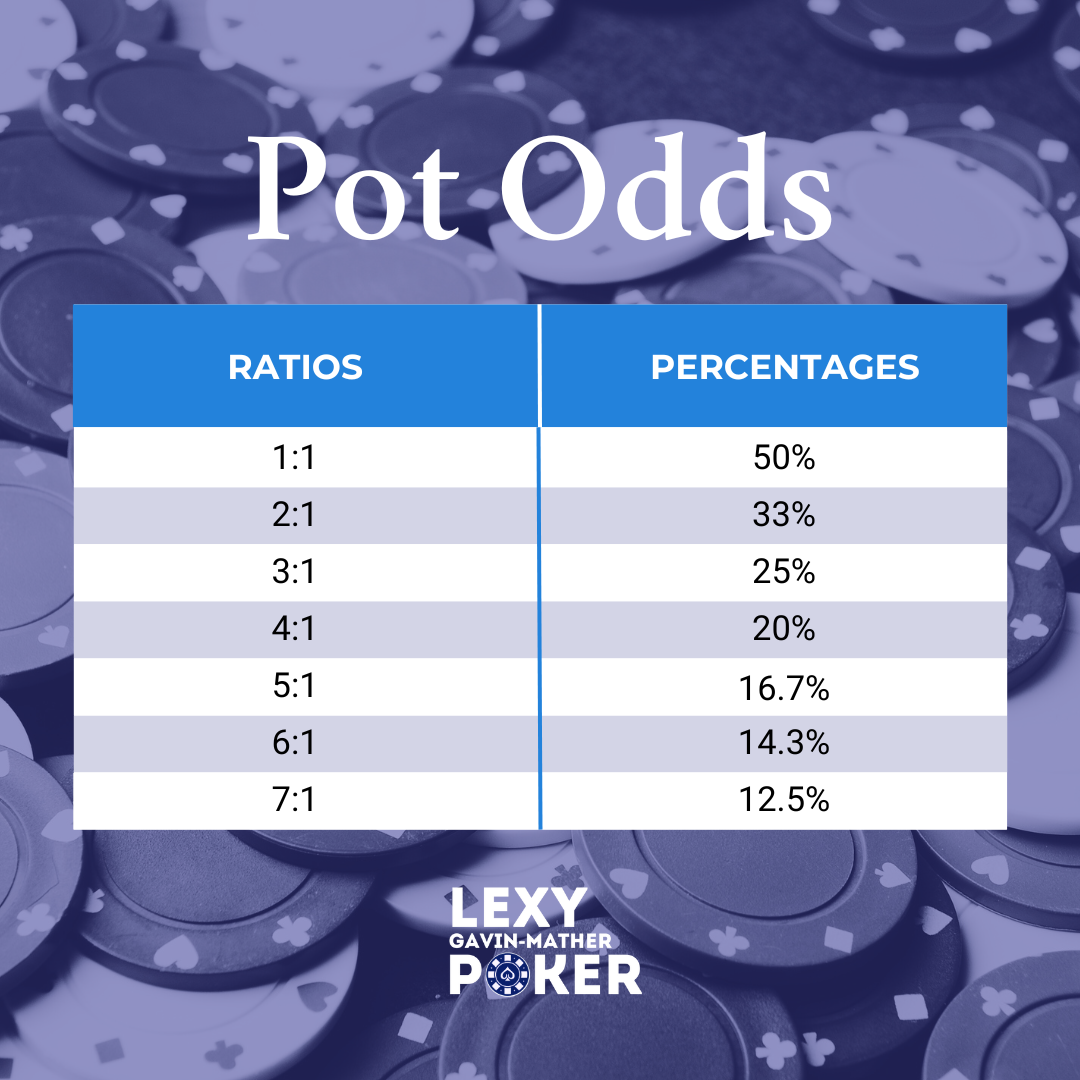Let’s dive into a crucial concept that can seriously up your poker game: pot odds.
Think of pot odds as “the price” you’re paying in poker. It’s the ratio between the size of the pot and the size of the bet you’re facing.

What Are Pot Odds?
In simple terms, pot odds tell you if you’re getting a good enough price to call with your draw. They’re the ratio between the size of the pot to the size of the bet.
Pot odds = [Size of the pot] : [Size of the bet]
If you’re not getting the right price, it might not be worth the call.
Let’s break it down:
Imagine you’re in a pot of $100 and your opponent bets $50. To figure out your pot odds, you need to know the total pot size after you add your opponent’s bet. Here’s how you calculate it:
- Pot size: $100
- Bet size: $50
- Total pot size: $150 (current pot + bet size)
- Pot odds: $150 (total pot size) : $50 (bet size)
This gives you pot odds of 150:50, which simplifies to 3:1.
Using Pot Odds to Make Decisions
Let’s take it one step further. Once you’ve calculated your pot odds, you’ll need to convert this ratio into a percentage. This helps you figure out how much equity your hand needs to make the call profitable.
Here’s how:
- Calculate the total pot size if you call: In our example, if you call the $50 bet, the total pot size becomes $200 (current pot + opponent’s bet + your call).
- Determine the call amount: $50
- Divide the call amount by the total pot size: 50/200 = 0.25
- Convert to a percentage: 0.25 x 100 = 25%
So, if you make the call, you need to win more than 25% of the time for the call to be profitable.
Using Pot Odds to Exploit Opponents
Another way to use pot odds to your advantage is by exploiting your opponents.
Let’s say you think your opponent is on a straight draw on the turn, you can choose a bet size that gives them insufficient pot odds to call. This way, you can make them fold their equity.
Let’s revisit our example with a twist:
- Pot size: $100
- You bet: $75
- Total pot size: $100 + $75 = $175
- Pot odds for your opponent: $175 (total pot size) : $75 (bet size)
This gives them pot odds of 175:75, which simplifies to about 2.33:1.
To convert this to a percentage:
- Calculate the total pot size if they call: $100 (current pot) + $75 (your bet) + $75 (their call) = $250
- Determine their call amount: $75
- Divide the call amount by the total pot size: 75/250 = 0.3
- Convert to a percentage: 0.3 x 100 = 30%
So, your opponent needs more than 30% equity to make the call profitable. If they have a draw that doesn’t give them enough equity, they’ll likely fold.
I know all this math can seem confusing so here’s a tip. Memorizing this chart will make your decisions a lot easier:
When you’re in-game and don’t want to get bogged down by calculations, remember The Rule Of 4 And 2:
- Two cards to come (like on the flop): Multiply your outs by 4 to estimate your equity.
- One card to come (like on the turn): Multiply your outs by 2.
This quick calculation can help you make fast, informed decisions without doing complex math at the table.
Mastering how to calculate your pot odds will help you make better decisions at the table. By understanding when you’re getting the right price to call, you can save money on bad calls and make more profitable plays. Keep practicing, and soon these calculations will become second nature.
Good luck at the tables, and may your pots be ever in your favor!








